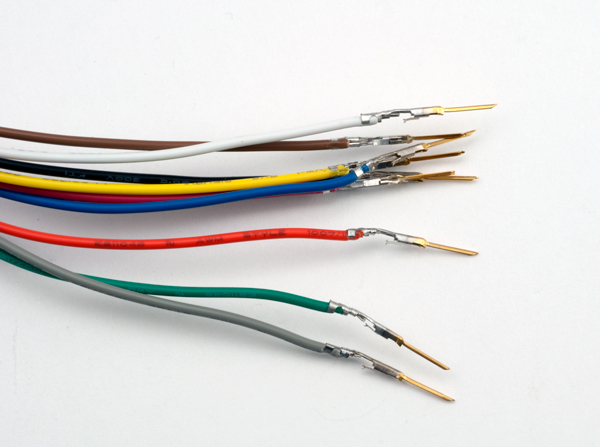Add Male Connectors to the Harness
This web page describes how to crimp the male connectors to the ends of the wires in the cable bundle. The descriptions here are brief because the procedure is nearly identical to the procedure for the female connector block. The main differences, besides the use of male instead of female crimp connectors, is that the pins are not inserted into a connector block, and there are no short jumpers tying pins together.
The entire assembly and test process is divided into the following steps.
Crimp the male connectors to the Arduino-end of the harness
Follow the same procedure used to attach the female crimp connectors. All of the male connectors are attached to a sigle wire, so only a short length of insulation is stripped from ends of the wires in the cable bundle.

After stripping a short section of wire, use the crimp tool to attach the male pin.

Repeat for each of the remaining eight wires on the male end of the wire harness.

Add heat shrink to provide electrical insulation of the pins
The male crimp pins are not inserted into a connector block. They could be, but the wires go to different locations on the Arduino, and therefore do not line up in a way that would fit a single connector block.
When the male pins are inserted into adjacent I/O sockets on the Arduino, or adjacent sockets on a breadboard, the side of the metal pins could easily come into contact, causing errors in the signals sent from the Arduino to the LCD panel.
The solution is to provide electrical insulation with heat shrink tubing.
Create a tidy bundle with zip ties
Cinching the bundle of wires together with zip ties is the final task in the fabrication of the wire harness